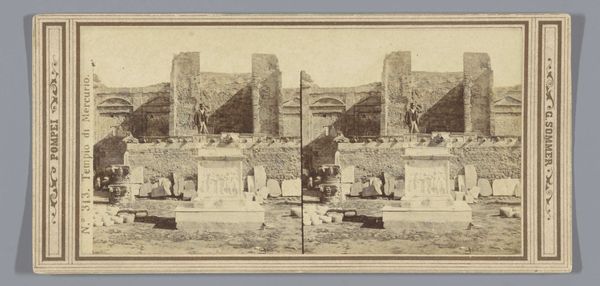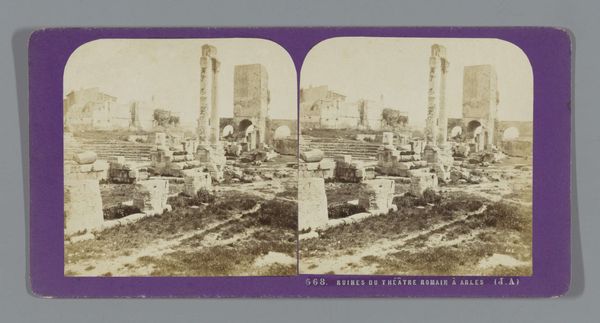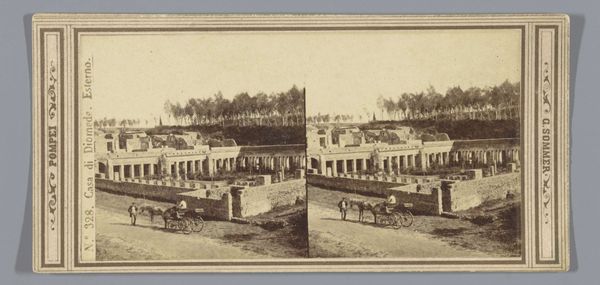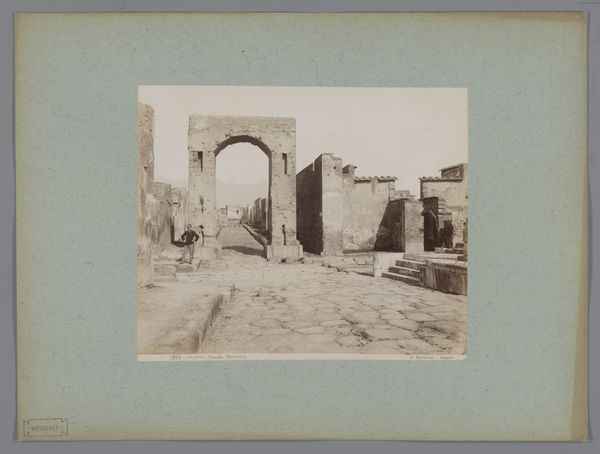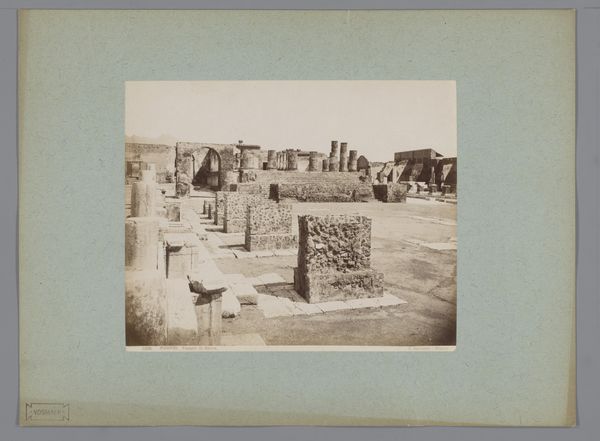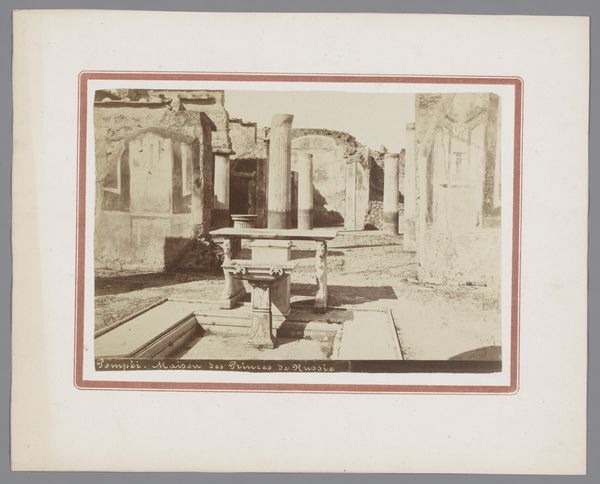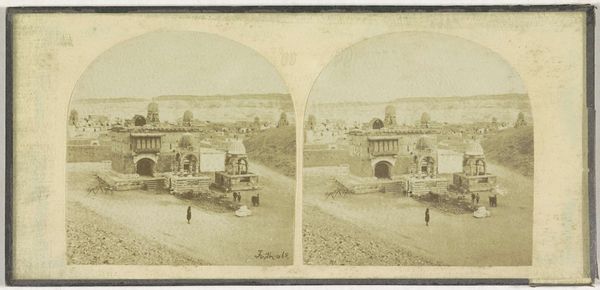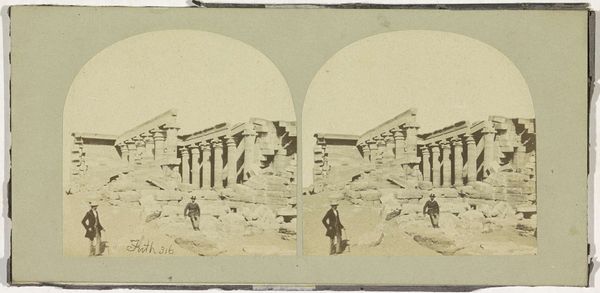
Dimensions: height 82 mm, width 172 mm
Copyright: Rijks Museum: Open Domain
Curator: Looking at this image, the first thing I notice is how still it is. Almost a perfect capture of suspended animation. Editor: Indeed. What we're seeing here is a gelatin silver print by Giorgio Sommer, titled “View of the Ruins of the Tempio di Giove in Pompeii,” created sometime between 1860 and 1880. It’s currently housed at the Rijksmuseum. Curator: Knowing that it’s a silver gelatin print really speaks to its materiality; this wasn’t a simple snapshot. The entire process—from collodion to albumen, and the final print—was labor intensive. Think of the transport of chemicals, glass plates, and a portable darkroom all the way to Pompeii. Editor: Absolutely, the image’s historical context is potent. The rediscovery and excavation of Pompeii captured the imagination of Europe. Here we see ruins representing more than a mere archaeological site; it symbolizes power structures, forgotten civilizations and their remnants of inequality, and colonial expansion—Sommer was based in Naples and profited greatly from tourism fueled by imperial projects. Curator: Yes, but at its core, this is about Roman concrete—the building blocks that made those hierarchies possible. The specific, very granular character of it. Look how light plays across these fractured surfaces, created through human manipulation. What do they tell us about labor? Editor: They narrate the ephemerality of power and the erasure of so much life from the historical record. I am also struck by the whiteness in the photo; it is stark. As you suggest, Roman society depended on slave labor for quarrying, building and maintenance, their stories now are literally buried. Even the romanticism inherent in ruins gets recontextualized under critical gaze. Curator: It makes you reconsider your viewing practices. To what degree we also use history as raw materials—a source? Editor: And how art itself acts as a social document. Thanks to photographers like Sommer, we’re able to reflect upon pasts that are intertwined within ongoing critical dialogues concerning identity, privilege, and memory. Curator: I am thankful that you helped me zoom out! These photographic ruins also act as the infrastructure to our reflections.
Comments
No comments
Be the first to comment and join the conversation on the ultimate creative platform.


